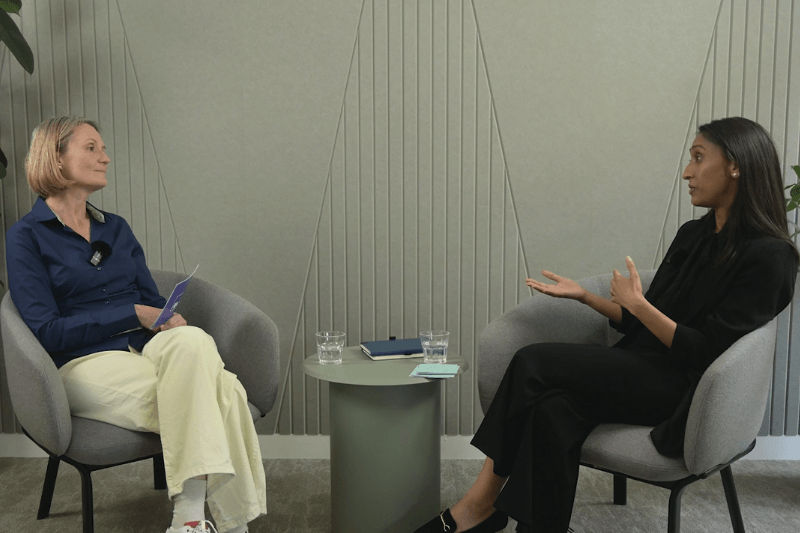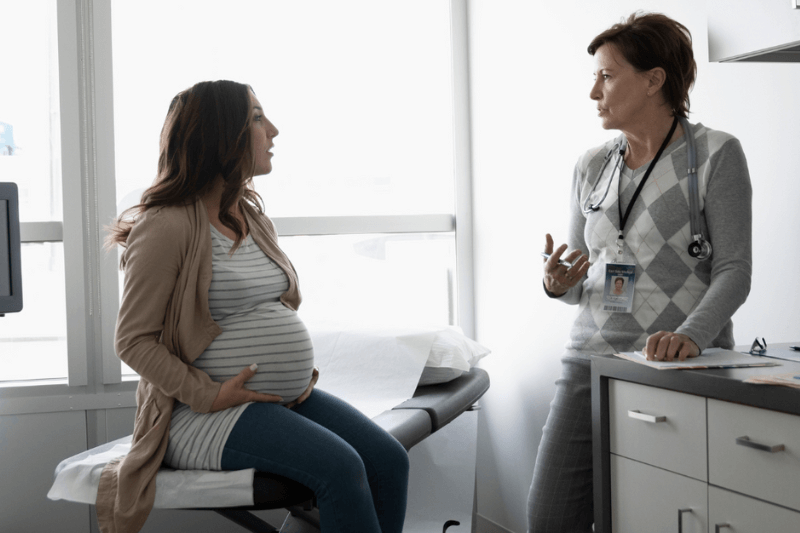Many women may not give much thought to period health and their menstrual cycle, as it typically occurs once a month with similar symptoms and duration. However, did you know the menstrual cycle consists of four distinct phases, each characterised by changes in hormones, energy levels, and symptoms?
Understanding these phases can be beneficial, as it helps you recognise when and why you might be experiencing certain feelings or physical changes. Claire Harris, registered nurse from our 24/7 health support line, for members, explores each phase and provides insight into what to expect throughout your cycle.
What is a menstrual cycle?
A menstrual cycle begins on the first day of your period and then ends the day before your next period begins.1 Cycle length varies from woman to woman, but the average is 28 days with 21 days to 35 days considered “normal”.1
Some women have cycle lengths longer than 45 days or have a period that’s less than 21 days apart – these are irregular periods which can be caused by a range of factors.
>Read more about period health in our What you need to know article
Phase 1 – menstrual phase
This is the first day of bleeding and, as mentioned above, the first day of your cycle. The cycle starts when the egg from the previous menstrual cycle does not become fertilised. As the thickened uterine lining is not needed, it will break down and shed, resulting in the lining and the egg coming out during the menstrual period.2
Hormones, in particular, oestrogen and progesterone, drop during this phase.
- Oestrogen – plays a role in brain function such as memory, mood regulation and mental processing.3
- Progesterone – the most important activity of progesterone is to prepare the womb lining for pregnancy. If the released egg is fertilised by a sperm, then progesterone is important for maintaining that pregnancy. As it allows the womb lining to ‘mature’, making it ready to allow the fertilised egg to implant and develop. If a pregnancy does not happen, then progesterone levels drop and the womb lining is shed.4
Symptoms during the menstrual phase
Common symptoms during this first phase can include:
- cramping – due to the muscles contracting in the uterus and the lining shedding,
- mood changes – especially with the drop in the oestrogen and progesterone,
- breast tenderness,
- headaches,
- tiredness,
- lower back pain.
Phase 2 – follicular phase
There is an overlap of this phase with the menstrual phase, as it also starts on the first day of your period. However, the follicular phase lasts longer, typically (remember every woman’s cycle is unique to them) around 10 to 16 days, and ends when a woman ovulates.5
During your follicular phase, the hormone called follicle-stimulating hormone (FSH) is released, which causes small fluid-filled sacs, called follicles, to develop in your ovaries. These follicles are stimulated by FSH causing them to prepare and develop unfertilised eggs ready for ovulation. One egg will then mature and release at ovulation (the next phase).6
As the follicles start to mature, oestrogen levels increase, resulting in an improvement in mood stability and a boost of positivity.
Symptoms during follicular phase
Mood – according to female health app Flo, many people report a positive mood between days 6 and 14 of their cycle. For some, their confidence grows slightly between days 6 and 13 of their cycle due to the increased oestrogen and testosterone levels.7
Energy – testosterone can make you feel more confident and extrovert during this phase with higher levels of energy. Libido is also highest, as your body is most fertile at the end of the follicular phase and during ovulation, known as your fertile window.
People often feel most confident and have a higher libido as it’s the body’s evolutionary way to try to procreate.6
Phase 3 – ovulation phase
This is when that matured egg developed during the follicular phase will release. The ovulation phase starts when rising oestrogen levels signal the pituitary gland to release luteinizing hormone (LH).
LH stimulates the process of the ovary releasing a mature egg. The egg then travels from the ovary, down the fallopian tube, and into the uterus. Sperm can fertilise the egg at any point during this journey.2
Symptoms during ovulation phase
There aren’t usually any extra symptoms during this phase, although this doesn’t mean that women won’t experience any symptoms at all. As every woman and their menstrual cycle is different, so some may feel nausea, cramps on the side where your ovary has released the egg or bloating.
The main difference in this phase is in the vaginal discharge, which is clear and stretchy like egg whites.
Phase 4 – luteal phase
This is the final phase in the cycle, during which the follicles turn into a mass of cells called the corpus luteum. These cells release progesterone, causing levels to rise. The purpose of progesterone is to keep the uterine wall thick, ready for a fertilised egg to implant.8
If the egg doesn’t become fertilised then the corpus luteum will dissolve into the body. As there has been no conception, oestrogen and progesterone levels will then start to lower after their peak around days 22 –24 of the cycle. It's at this point that premenstrual syndrome (PMS) can start.7
Symptoms during luteal phase
The first half of the luteal phase – with progesterone levels higher at the beginning of this phase, some women may feel less stressed and less anxious. This is due to progesterone potentially influencing the chemicals in our brain which are responsible for controlling levels of mood and anxiety. Serotonin and GABA (gamma aminobutyric acid) for example, are both thought to play a role in controlling anxiety, stress and fear.9
The second half of this phase – with the increase of progesterone in the first half and then the drop of both oestrogen and progesterone in this second half, for many women this then triggers PMS. These changes in hormones can also cause low mood, irritability and skin issues such as acne. For those who experience PMS, symptoms can include:
- mood swings,
- feeling irritable or depressed,
- tiredness or trouble sleeping,
- feeling emotional, upset, or anxious,
- fluid retention and bloating or cramping,
- acne,
- greasy hair,
- headaches,
- food cravings or changes in appetite,
- or breast tenderness.
>Read more about the causes of PMS and how to help manage symptoms
What can cause changes to the phases?
Cycle lengths and symptoms vary for every woman and can also change throughout a woman’s menstrual health journey – for example symptoms experienced as a teenager might now be entirely different as an adult. There are also several conditions or life stages that can affect cycles and the phases:
Menopause – as women approach menopause, cycle lengths may start to change, with periods becoming less frequent, heavier or lighter. This can be the result of the perimenopause, the transition phase to menopause, where periods stop altogether.
Menopause symptoms may start to occur during this time, but periods will continue until there’s been an absence of periods for 12 months. Once there have been no periods for 12 months, then a woman is considered post-menopausal.
>Read more about the perimenopause and when it starts
Endometriosis – a long-term condition where cells, similar to the lining of the womb, start to grow in other areas of the body, such as the ovaries and fallopian tubes. Symptoms can vary throughout the menstrual cycles, but can include:
- pelvic pain,
- very painful periods,
- pain when you open your bowels or pass urine, which is often worse during the menstrual phase,
- bleeding from your bowels or bladder, also during the menstrual phase, • pain during or after sex.10
>Read more about endometriosis and the symptoms and treatment
Polycystic ovary syndrome (PCOS) – a common hormonal condition that affects how the ovaries work. Polycystic ovaries are often unable to release eggs as frequently which can result in irregular periods along with hormonal imbalances, including excess testosterone and high levels of insulin.
Not everyone will experience PCOS symptoms, and the severity will vary, but some of the main ones to look out for are:
- missed, irregular or very light periods – caused by the ovaries not being able to release eggs (ovulate) regularly,
- excess facial or body hair – caused by high levels of ‘male’ hormones in the body,
- thinning hair or baldness – also caused by hormone imbalances,
- weight gain – particularly around the abdomen,
- skin issues – including skin tags, acne, oily skin and dark or thick patches of skin.
>Read more about PCOS and the symptoms
It's important to remember that every woman is different, and the cycles and symptoms your friends experience won’t be the same as yours. But knowing the phases of the menstrual cycle and why you might be feeling a certain way during a particular time of the month, can help provide reassurance. It can also empower you to better manage your wellbeing and anticipate any fluctuations in your mood or energy.
References
- Periods and fertility in the menstrual cycle – NHS
- What are the phases of the menstrual cycle? – Medical News Today
- The role of oestrogen in the body – Menopause Care
- What does progesterone do? – My Menopause Centre
- The follicular phase – Medical News Today
- What is the follicular phase? – Flo
- What Happens to Hormone Levels During the Menstrual Cycle? – Flo
- The luteal phase – Medical News Today
- Side effects of progestogens – My Menopause Centre
- What are the symptoms of endometriosis? – Royal College of Obstetricians and Gynaecologists (RCOG)














